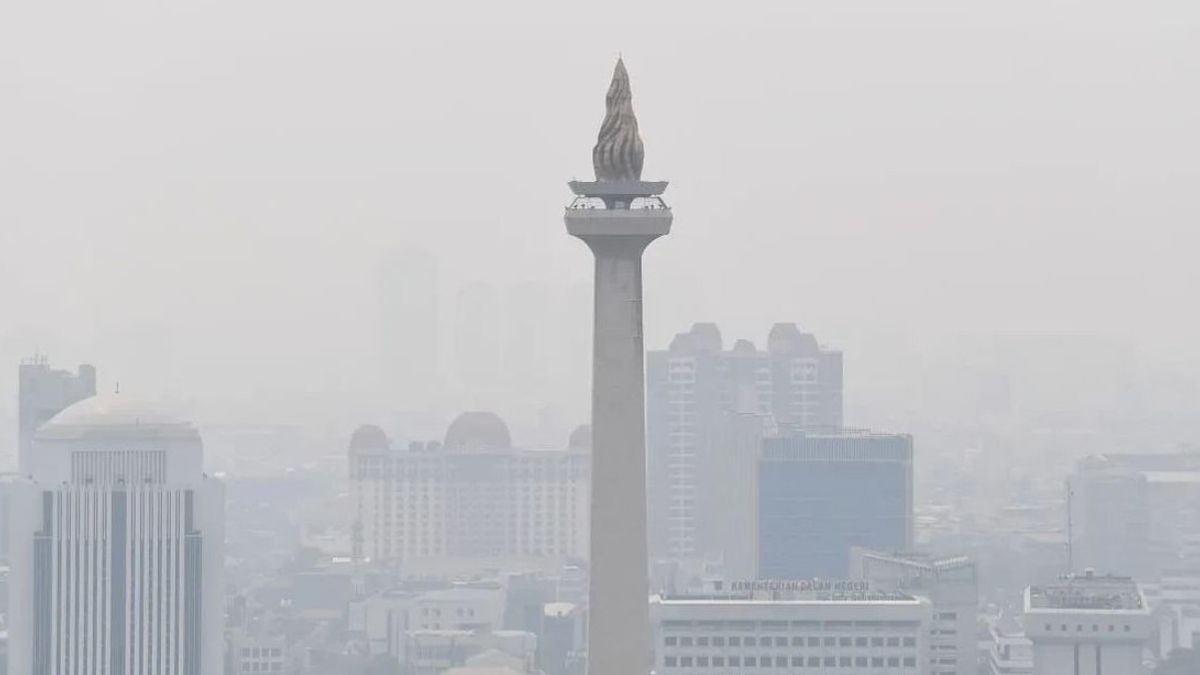In the midst of worsening air pollution in Jakarta and its surroundings, various efforts have been made to reduce its impact. Starting from spraying protocol roads in Jakarta to carrying out Weather Modification Technology (TMC) or better known as artificial rain.
The DKI Jakarta Provincial Government (Pemprov) has deployed at least 20 fire engines to spray on several sections of the capital city protocol. This is done as a way to reduce air pollution.
The Fire Department deployed 20 fire engines with 200 personnel who would conduct watering. In addition to cars belonging to the fire department, the DKI Jakarta Provincial Government has also deployed water transport cars belonging to the local government, such as the Water Resources Service and the Environment Agency.
"We hope that the watering of plants using processed water from Palijaya can maintain plant fertility so that it will develop and produce good oxygen for the community," said Head of the Green Line Division of the City Parks and Forests Service (Distamhut) DKI Jakarta Province, Herlina Melinda.
In addition to spraying water onto the road, a more extreme way is to engineer the weather to overcome increasingly troubling pollution. People hope that it will rain in the midst of the hot weather will be answered. On Sunday (27/8/2023) it rained quite heavily in several areas in Jakarta, Tangerang, and Bogor. Head of the Meteorology, Climatology and Geophysics Agency (BMKG) Dwikorita said the rain that occurred in a number of areas was the result of weather modifications.
"It's still the dry season. It's raining because the weather modification technology (TMC) is being implemented," said Dwikorita.
The water spraying process was carried out on several protocol roads in Jakarta last week. Spraying is done twice a day in the hope of reducing air pollution in Jakarta which is getting crazier.
But the efforts of the DKI Provincial Government to suppress air pollution by spraying water on the road have drawn various responses. There are pros, but also many are cons. Greenpeace Indonesia Urban Justice Campaigner Charlie Albajili said the move was not a solution. He regretted that the DKI Jakarta Provincial Government only thought of short-term solutions, but did not solve the problem of the roots.
"The most important thing is to solve the problem from the root of the problem, then be responsible for the consequences (air pollution) caused by residents," Charlie said last week.
Charlie's opinion in doubt of the positive effects of spraying water in Jakarta is reinforced by the results of research conducted by China. Previously, research by experts in the journal National Library of Medicine (NIH) published in May 2021 stated that large-scale water spraying actually contributed, instead of reducing, causing air pollution.
Water spraying actually triggers an increase in the concentration of the PARTiculate Meter (PM) 2.5. According to researchers, the sprayed water can produce new anthropogenic aerosols or fine particles that are not visible and thus become a source of new air pollution.
This was revealed by public health expert from the Department of Environmental Health of the Work Environment, School of Public Health, Hebei University of Medicine, China, Fengzhu Tan.
"Our research results show that spraying roads with increasing water, not lowering, PM2.5 concentration," explained Tan in his research.
PM2.5 is a dust particle measuring 2.5 microns. This size is finer than a human hair, which is equivalent to 1/30. PM2.5 is considered the deadliest air particle for humans because it is very easy to enter the respiratory system.
PM2.5 does not only arise from vehicle smoke, but also from factory stocks, smoke from burning wood, oil, coal, or due to forest and seaweed vehicles. PM2.5 can also be produced from indoors originating from cigarette smoke, cooking smoke, wax smoke or lighting oil, and heating smoke which then causes household air pollution.
Efforts to reduce air pollution are not only done by spraying, but also with weather modification technology. As is known, several areas in Jakarta, Tangerang, and Bogor experienced quite heavy rain last weekend. Deputy for Meteorology BMKG Guswanto said this was thanks to weather engineering carried out by the results of cooperation between BMKG, BRIN, BNPB, and TN AU.
The weather engineering in question is to accelerate the potential for rain cloud growth to rain by smearing it with NaCl salt powder. This TMC is the result of collaboration between BMKG, BRIN, BNPB, and the Indonesian Air Force," Guswanto explained.
Various methods have actually been tested by humans for a long time to get the desired weather and climate conditions. In Indonesia, weather modification technology is better known as artificial rain. Because this technology is more of an activity to reduce artificial rain.
Artificial rain technology is done to overcome drought by pouring rain on reservoirs or dams to increase water reserves, as quoted by climate4life. Artificial rain is also used to help deal with forest and land fires (karhutla) that are increasingly frequent. If successful, weather modification technology can improve air quality because rain will clean up pollutants in the atmosphere.
According to the World Meteorological Organization (WMO), weather modification technology can include activities to accelerate the loss of fog, increase rainfall or also snow and reduce the potential for hail.
The weather modification technology was first carried out in 1940 in the form of a cloud seeding trial conducted by Vincent J. Schaefer. After half a century, the science of weather modifications is still in its early stages with many questions about the most effective way to produce the desired changes in certain situations.
Quoted by Science Jrank, weather modification technology is also used by the United States army as military weapons. US troops use cloud seeding during the Vietnam War. The hope is that there will be an increase in rainfall, making it difficult for the movement of personnel and materials along the Ho Chi Minh route.
However, weather modifications have several challenges, ranging from the complexity of early microphysics to macro factors about clouds. According to encyclopedi Britanica, weather modification technologies can increase rainfall, but in several other cases it does not affect anything. Meteorological conditions are considered to play an important role in the success of artificial rain.
In addition, to modify the weather requires quite large funds. The National Research and Innovation Agency (BRIN) revealed that operational costs for making modifications to the weather can reach Rp. 200 million per day. These costs are used to buy aircraft fuel, aka avtur, cloud or salt material, and operational costs for personnel.
With one aircraft unit per day around Rp150-200 million per day. Using a cassa aircraft unit, the flight model is twice," said BRIN Weather Modification Technology Laboratory (TMC) Coordinator Budi Harsoyo in January.
SEE ALSO:
The English, Chinese, Japanese, Arabic, and French versions are automatically generated by the AI. So there may still be inaccuracies in translating, please always see Indonesian as our main language. (system supported by DigitalSiber.id)













